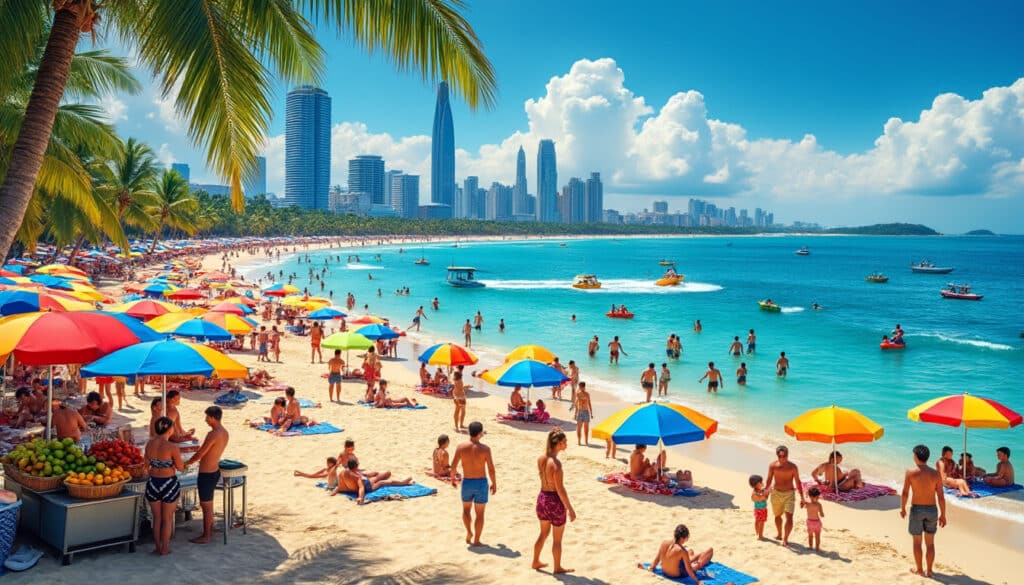Located on the Eastern Gulf coast of Thailand, Pattaya has earned its reputation as a vibrant city with a unique architectural tapestry that mirrors its historical evolution from a quaint fishing village into a bustling urban hub. Known for its sunny beaches, lively nightlife, and rich cultural experiences, Pattaya is also a testimony to innovative architectural practices and urban planning strategies that harmonize modernist aspirations with sustainable and culturally sensitive designs. Each building, from ultra-modern skyscrapers to traditional wooden houses, tells a part of Pattaya’s story, offering visitors and residents a diverse structural landscape to explore.
An Overview of Pattaya’s Architectural Diversity
Pattaya’s architectural scene is as vibrant and diverse as its culture. The city has managed to mesh together a complex blend of architectural styles, reflecting both its historical roots and its modern advancements. The tropical architecture of traditional Thai designs offers a stark yet harmonious contrast to modern contemporary structures. The presence of tropical architecture is primarily visible in villas and traditional Thai houses, where broad verandas and high-pitched, tiled roofs not only enhance aesthetic appeal but also cater to the tropical climate, providing shade and promoting air circulation.
The modern skyline of Pattaya is peppered with towering hotels and condominiums that signify rapid urbanization. Structures like the Arbour Hotel and Residence, designed by Architects 49, portray the city’s architectural dynamism. This 23-story edifice dominates the skyline, illustrating the trend towards vertical expansion due to limited urban space. Such skyscrapers are meticulously designed to offer all the luxuries of urban living while maintaining efficiency and sustainability in line with global trends.
Behind this evolution is the archetype of sustainable architecture. Many of these buildings integrate eco-friendly features such as rainwater harvesting systems, energy-efficient lighting, and materials that minimize environmental footprints. This commitment to sustainable architecture not only enhances the livability within these structures but also aligns with global climate-conscious efforts, making Pattaya a noteworthy player in modern urban design.
- 🗺️ Tropical architecture for climate adaptation
- 🌆 High-rise buildings reflecting urban expansion
- 💧 Sustainable practices in modern architecture
| Architectural Style | Characteristics | Examples |
|---|---|---|
| Traditional Thai | High-pitched roofs, wood structures | Villas, Thai houses |
| Modernist Pattaya | Skyscrapers, glass facades | Arbour Hotel and Residence |
| Sustainable Architecture | Eco-friendly, energy-efficient designs | Rainwater harvesting systems |
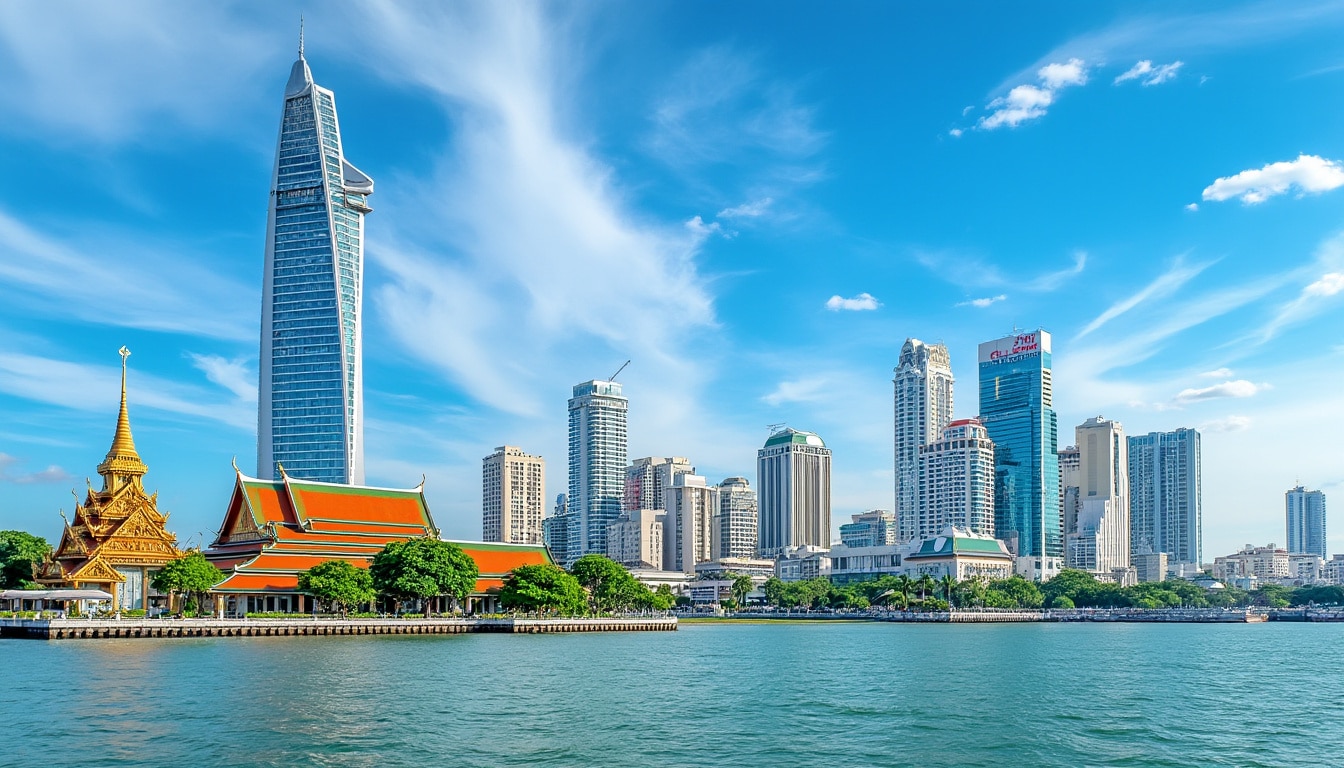
Pattaya’s architectural landscape is not just about aesthetics; it is a study in seaside urban planning and how best to maximize space under the constraints imposed by a growing urban populace. The juxtaposition of cultural heritage and innovative technology makes Pattaya an intriguing case in the field of architecture and urban planning.
The Role of Urban Design in Shaping Pattaya
The evolution of Pattaya as an urban center has been guided by strategic urban design that emphasizes livability and functionality. Urban design in Pattaya is characterized by a combination of effective land use policies, transportation planning, and public space management. The goal is to ensure that the city remains a highly desirable destination for both tourists and residents.
One of the prominent features of urban design in Pattaya is the integration of green spaces. Parks and greenery are interspersed throughout the city to provide a respite from the urban hustle. These spaces also serve as community hubs where residents and visitors can engage in leisure activities, contributing to the overall quality of life. Initiatives such as the development of public parks and the enhancement of pedestrian pathways are integral to this planning process, promoting a healthier, more connected community.
Moreover, the transportation network in Pattaya is crucial to its urban identity. The city’s smart city initiatives are designed to optimize traffic flow and reduce congestion. Public transportation systems are being modernized with real-time data to improve efficiency. Such technological integration ensures that commuting within the city is both convenient and environmentally friendly, supporting Pattaya’s growth as a sustainable urban center.
- 🌳 Integration of green spaces in urban design
- 🚶♀️ Enhancement of pedestrian infrastructure
- 🚍 Modernization of public transportation for sustainability
Another key aspect is the focus on waterfront development. Given Pattaya’s coastal location, the city has numerous waterfront projects that aim to leverage the scenic beauty while ensuring environmental sustainability. These projects often incorporate marine architecture principles, which include measures to protect the delicate marine ecosystems while facilitating tourist activities.
| Urban Design Element | Purpose | Current Initiatives |
|---|---|---|
| Green Spaces | Enhance livability, provide leisure areas | Community parks, urban gardens |
| Transportation Networks | Optimize mobility, reduce congestion | Real-time traffic data, improved public transit |
| Waterfront Development | Leverage scenic beauty, protect ecosystems | Marine architecture projects |
The urban design in Pattaya is a reflection of foresight in planning and commitment to creating a city that is as functional as it is beautiful. By integrating aesthetic, cultural, and environmental considerations, Pattaya continues to thrive as a model for well-rounded urban development.
Modernist Influences on Pattaya’s Skyline
The transformation of Pattaya’s skyline into a modern architectural marvel didn’t happen overnight. It is the result of embracing modernist architecture influences that prize technical innovation and simplicity. Many of Pattaya’s skyscrapers and contemporary buildings exhibit characteristics of modernism, such as an emphasis on volume over mass, the use of new materials, and a preference for asymmetrical compositions.
A prime example of modernist architecture in Pattaya is the new series of luxury condominiums and hotels that rise majestically against the backdrop of the ocean. These buildings often feature sleek lines, expansive glass facades, and open floor plans designed to maximize natural light and offer panoramic views of the sea. This not only enhances the aesthetics but also contributes to energy efficiency, aligning with the city’s goals of sustainable development.
Pattaya also sees the influence of smart city concepts within its modern architecture schemes. Buildings are increasingly designed with smart technologies that enhance energy efficiency—using automated systems for lighting, heating, and air conditioning that minimize waste. The advent of smart buildings is transforming how architectural spaces interact with their inhabitants, fostering a more sustainable and technologically integrated urban environment.
- 🏢 Innovative use of new building materials
- 🔍 Emphasis on asymmetry and open space
- 💡 Integration of smart technologies in architecture
Additionally, modernist architecture in Pattaya is deeply connected to the city’s cultural fabric. Cultural features of Pattaya are often incorporated into modern designs, ensuring that new developments resonate with the city’s identity. This includes symbols, motifs, and design elements derived from traditional Thai artistry, seamlessly blending past with present.
| Modernist Feature | Architectural Element | Benefits |
|---|---|---|
| Sleek Lines | Glass facades, minimalist structures | Enhanced aesthetics, maximize light |
| Smart Technologies | Automated systems, energy efficiency | Reduce energy waste, user convenience |
| Cultural Integration | Traditional motifs, local materials | Cultural resonance, unique city identity |
The synthesis of modernist design with cultural influences paints a skyline that is uniquely Pattaya—distinctive, innovative, yet deeply respectful of its roots, offering a blueprint for urban development that other cities may well emulate.
Sustainable Design and Its Impact on Pattaya
Sustainability in architecture is more than a trend in Pattaya; it is a necessity. With a growing population and an influx of tourists, the city has embraced sustainable architecture as a core principle in its development. This approach is crucial in managing the environmental impact of rapid urbanization while preserving natural resources for future generations.
Buildings across Pattaya are now designed to reduce carbon footprints, promote energy efficiency, and use recycled or local materials. This practice not only targets environmental conservation but also significantly cuts down on operational costs, making sustainable design economically viable as well. Green roofs, solar panels, and smart water management systems are becoming common features in new constructions.
Many new developments incorporate these sustainable practices. For instance, developers strategically place buildings to optimize natural ventilation, minimizing the need for artificial air conditioning. They also use advanced technologies like building management systems to control energy use, maximizing efficiency.
- 🌱 Green roofs for insulation and ecosystem support
- ☀️ Solar panels for renewable energy
- 💧 Smart water management systems
The impact of sustainable design extends beyond individual buildings. It influences community design, encouraging lower carbon living. Seaside urban planning in Pattaya now includes creating walkable neighborhoods to reduce reliance on vehicles, further cutting down on pollution and improving public health through increased physical activity.
| Sustainability Initiative | Environmental Benefit | Examples in Pattaya |
|---|---|---|
| Green Roofs | Insulation, wildlife habitat | New hotels and condominiums |
| Solar Panels | Renewable energy, reduced bills | Office buildings, residential complexes |
| Neighborhood Design | Reduced emissions, healthier lifestyle | Walkable suburban developments |
Sustainability in Pattaya is a dynamic process, continually evolving to address new environmental challenges. It sets a benchmark for urban development by demonstrating that growth and ecological responsibility can go hand in hand, making Pattaya a leader in adaptable urban planning.
Challenges and Opportunities in Urban Development
Urban development in Pattaya presents a range of challenges, but it also opens up numerous opportunities for innovation and improvement. The city’s rapid growth intensity requires strategic planning to manage land use effectively while ensuring that infrastructure development keeps pace with the expanding population.
A major challenge is maintaining a balance between urbanization and environmental conservation. Pattaya’s proximity to the coast requires careful management to protect its marine ecosystems against encroachment and pollution. Marine architecture becomes essential, offering innovative solutions for building around and on water bodies while preserving aquatic life.
- 🔍 Strategic land use planning is crucial
- 🏗️ Balanced urbanization with conservation efforts
- 🌊 Importance of marine-friendly designs
Furthermore, the pressure on infrastructure, such as roads and public amenities, is mounting. Opportunities lie in smart infrastructure development, which uses technology to enhance the efficiency of services like waste management and energy distribution. Embracing technological advancements in these areas could mitigate potential shortfalls and improve the quality of life for residents and tourists alike.
Despite these challenges, Pattaya’s commitment to dynamic urban planning is evident in projects that promote both economic growth and quality of life improvements. The integration of cultural elements in urban planning processes is another area where Pattaya excels, ensuring the city retains its unique identity even as it grows.
| Urban Challenge | Solution Opportunity | Potential Outcome |
|---|---|---|
| Land Use Management | Strategic planning, sustainable practices | Efficient urban growth, reduced sprawl |
| Environmental Conservation | Marine architecture, eco-friendly policies | Preserved ecosystems, sustainable development |
| Infrastructure Pressure | Smart infrastructure solutions | Enhanced public services, improved living standards |
The landscape of Pattaya is continuously changing, bringing both challenges and opportunities for urban development. By addressing these effectively, Pattaya aims to maintain its allure as a thriving cultural and tourist hotspot while ensuring a sustainable future for its residents.
Frequently Asked Questions
- What are the key architectural influences in Pattaya?
Pattaya showcases a blend of traditional Thai architecture, modernist influences, and sustainable design practices, reflecting the city’s evolution from a fishing village to a modern urban area. - How does Pattaya manage ecological sustainability in urban planning?
Pattaya incorporates eco-friendly designs, utilizes smart technologies for energy efficiency, and applies marine architecture principles to protect the local environment. - What role does transportation play in Pattaya’s urban design?
Transportation is a critical part of Pattaya’s urban design, with efforts focused on optimizing networks to reduce congestion and improve public transit efficiency.
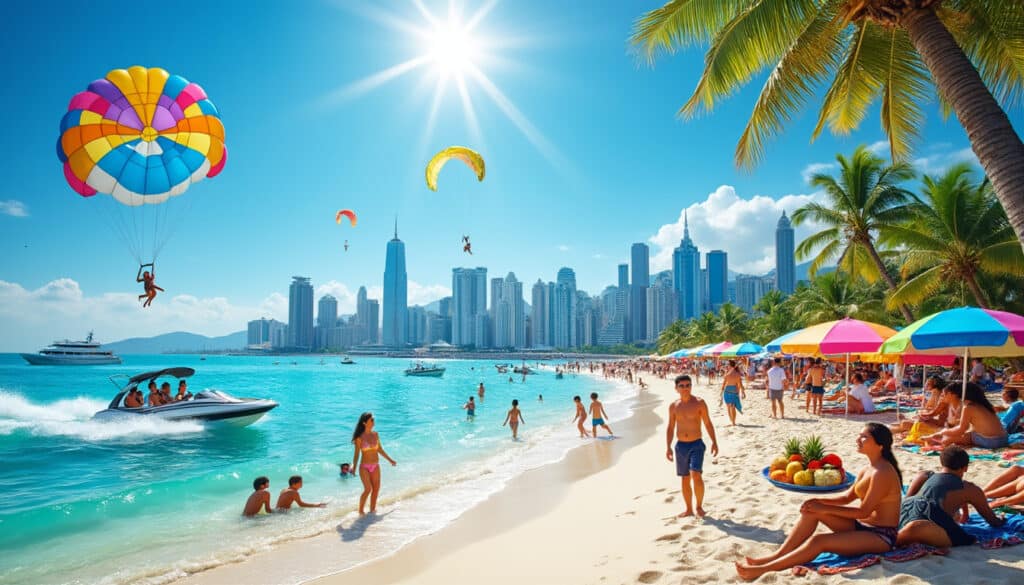
Fun Facts & Curiosities About Pattaya
🌴 Pattaya, a vibrant coastal city located on Thailand’s eastern Gulf, is synonymous with excitement, relaxation, and an eclectic blend of traditional and modern attractions. Known for its energetic nightlife and picturesque beaches, Pattaya offers something for everyone. Besides its…
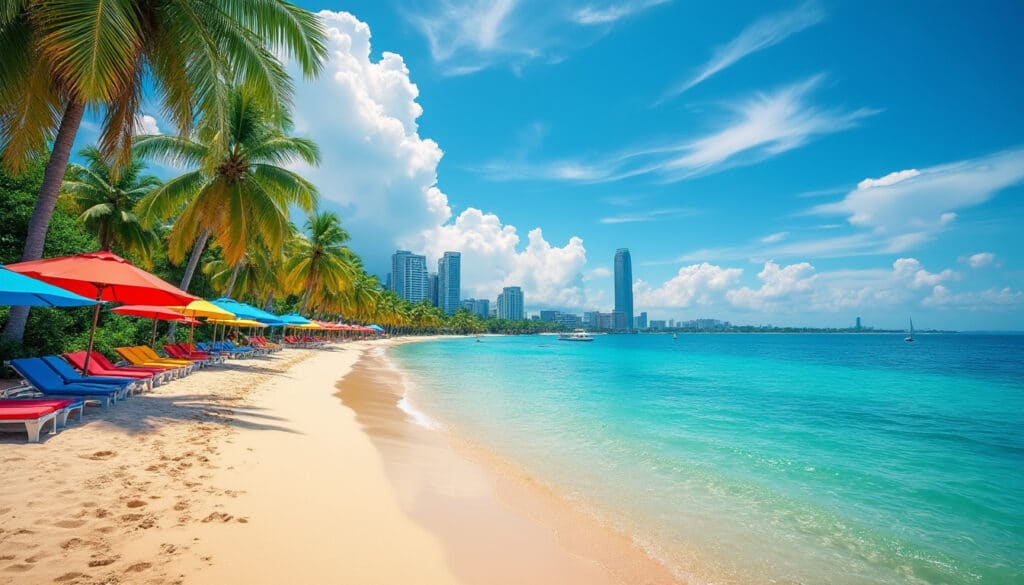
Pattaya is a jewel on Thailand’s eastern Gulf coast, known for its vibrant mix of stunning beaches, cultural attractions, and lively nightlife. What started as a quiet fishing village has transformed into a bustling beach resort, drawing millions of tourists…
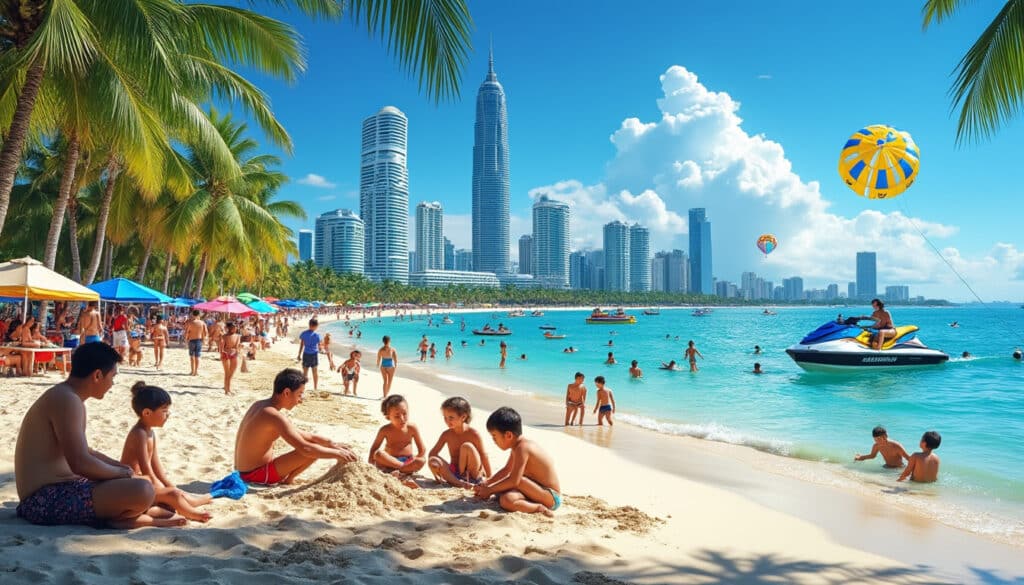
Demographics and geography of Pattaya
The vibrant city of Pattaya, located on the eastern seaboard of Thailand, has grown significantly over the years, developing from a quiet fishing village to one of the most recognized tourist destinations in the world. As the second-largest city in…
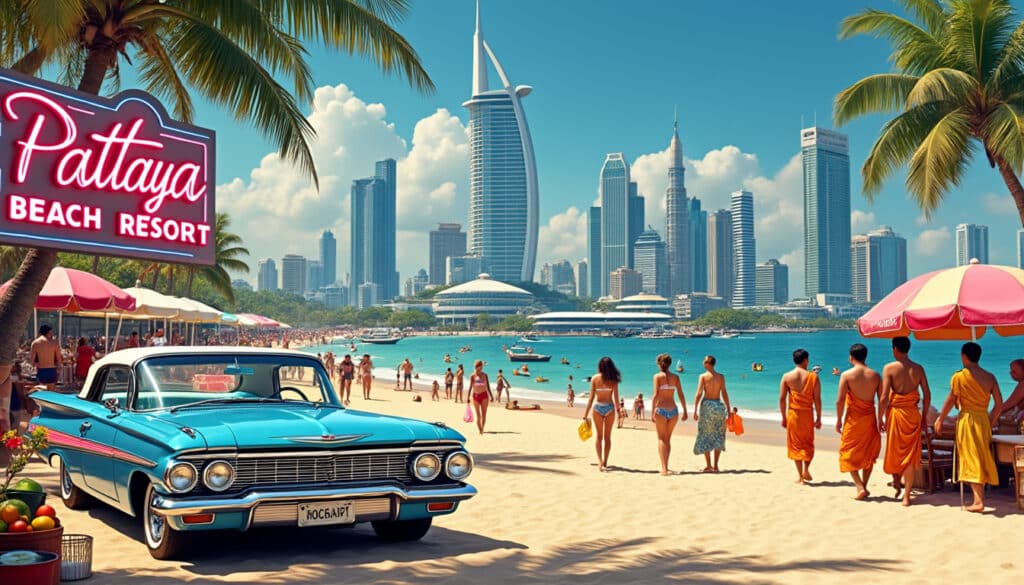
Pattaya, a vibrant city nestled on the eastern coast of Thailand, has undergone a profound transformation from its humble beginnings to becoming a renowned international tourist destination. Known for its lively nightlife and picturesque beaches, Pattaya offers a captivating story…

Holidays and celebrations in Pattaya
Pattaya, a vibrant coastal city renowned for its lively atmosphere, transforms into a hub of festivity throughout the year. From traditional Thai celebrations to modern cultural events, there’s always something happening in Pattaya to captivate locals and visitors alike. Whether…
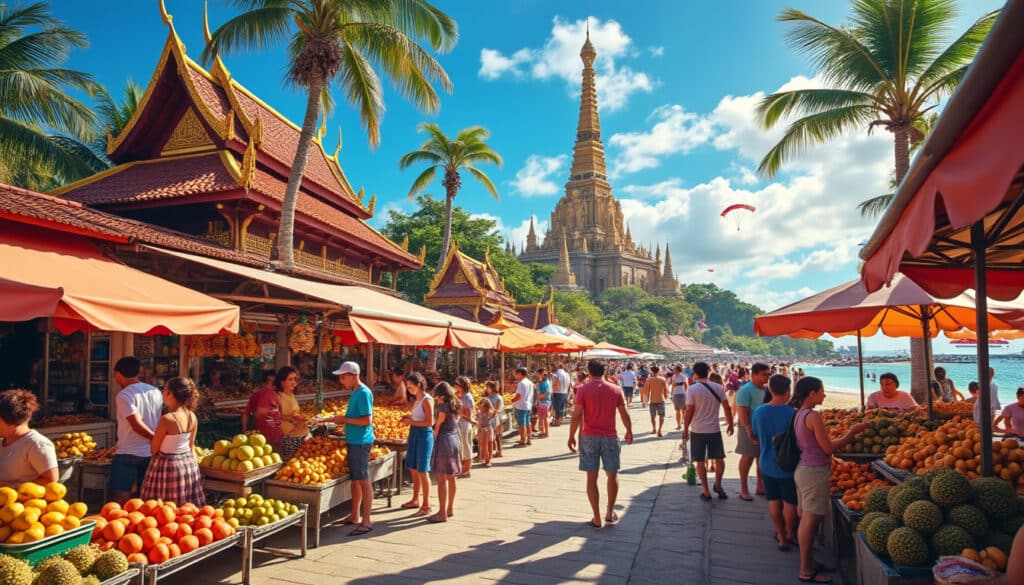
Local tips for tourists in Pattaya
Traveling to Pattaya, Thailand offers a kaleidoscope of experiences, from stunning beaches and vibrant nightlife to rich cultural landmarks and culinary delights. This bustling city, once a quaint fishing village, has blossomed into one of the key tourism hubs in…
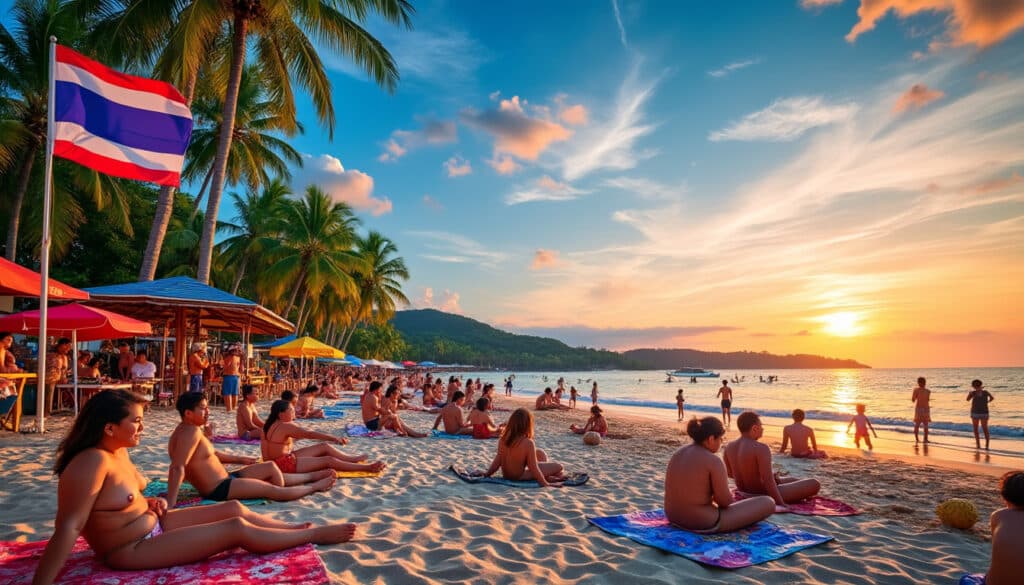
Names, flags, and identity of Pattaya
Pattaya, a vibrant city located on Thailand’s eastern Gulf coast, intertwines a rich tapestry of history, culture, and identity through its names and symbols. Often considered a microcosm of Thailand’s broader cultural narrative, Pattaya has evolved from a humble fishing…

Reputation and identity of Pattaya
Pattaya, once a small fishing village, has evolved into a renowned global tourist destination known for its vibrant nightlife, stunning beaches, and diverse cultural experiences. This transformation over the past 70 years has turned Pattaya into a city of contrasts,…

Situated along the Eastern Gulf coast of Thailand, *Pattaya* is not only a renowned tourist destination, but it also offers intriguing insights into local timekeeping practices and time zone considerations. As *Pattaya* is nestled in the tropical region of the…
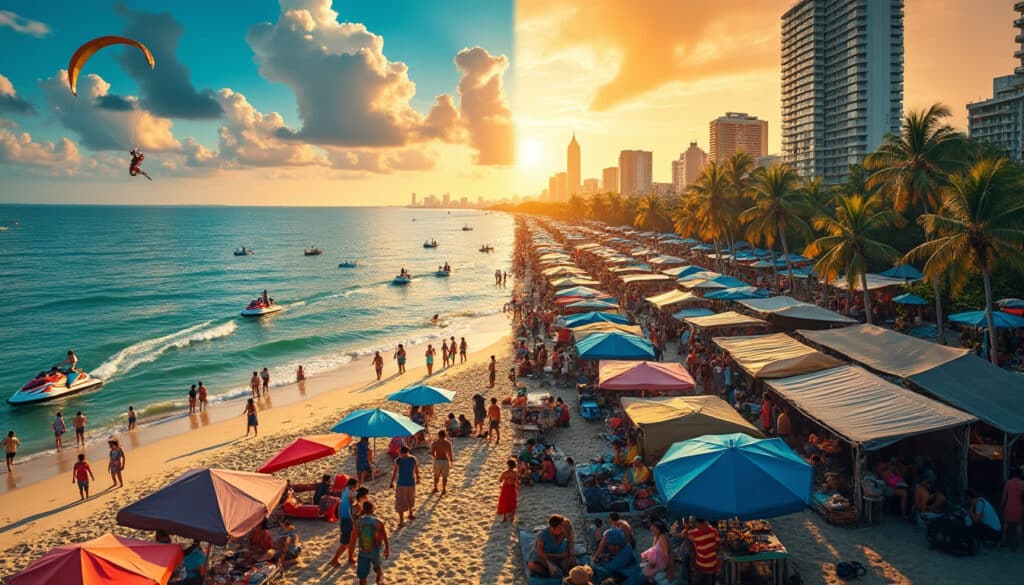
Unusual facts and social issues in Pattaya
Pattaya, a vibrant coastal city on Thailand’s eastern Gulf coast, is known for its unique blend of lively nightlife, stunning beaches, and diverse cultural experiences. While it’s a popular destination for tourists seeking excitement and relaxation, Pattaya also faces intriguing…

What does Pattaya look, smell, feel like?
When people hear about Pattaya, often pictures of lively nightlife and vibrant beaches come to mind. However, there’s a deeper side to this iconic Thai city that is waiting to be discovered by travelers. Pattaya’s sensory experiences go beyond its…
Language and spelling of Pattaya
The vibrant city of Pattaya in Thailand is known for its bustling nightlife, stunning beaches, and rich cultural tapestry. As a major tourist destination, the city attracts visitors from around the globe. However, navigating the local language and pronunciation nuances…


